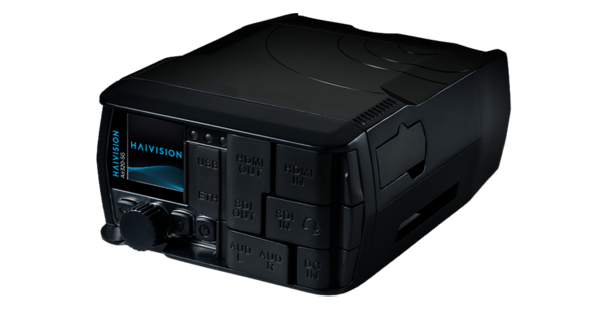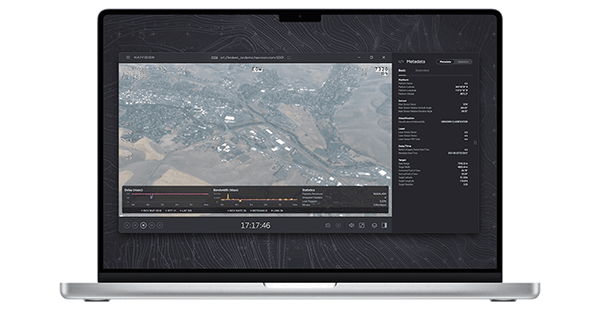More organizations are livestreaming video than ever before. It is an excellent way to improve communications with employees from around the globe who are working in local offices or from home. An important factor in the success of these live streams is the quality of the viewing experience. Organizations are looking to engage with their employees in real-time with a broadcast-quality experience; this requires proper equipment, including a video encoder that can deliver high picture quality at low latency and with low bandwidth consumption with secure access over both private corporate networks and the internet.
Whether you are livestreaming an important company event such as a sales conference or sharing an executive all-hands meeting, the higher the quality of your live stream, the larger the impact it will have. Let us explore some of the key features that a video encoder needs to be both broadcast quality and enterprise-grade.
Low Latency
Latency is the amount of time between when a video is captured and delivered to the viewer. Latency is introduced through the multiple steps required for streaming live video. These include compressing (or encoding) the video, video processing, encapsulation of metadata, transcoding into online streaming formats, and decoding at the receiving end. Anything that alters the video content and stream will add latency.
For enterprise video applications that require 2-way interaction or bidirectional video, such as interviews or discussions between multiple sites, latency needs to be kept as low as possible to ensure that the conversations are natural and fluid. For streaming to mobile devices, there can be significant latency introduced when passing through multiple network nodes or an enterprise content delivery network (eCDN). Choosing a low latency encoder at the onset can have a significant impact on overall end-to-end latency and therefore the viewing experience.
Maintaining Video Quality Over Any Network
When selecting a video encoder, you first need to consider what type of network you will be using to stream your video. Managed IP networks such as a LAN or WAN should be able to provide enough bandwidth for video streaming. However, if the video is going to be captured from a remote location over the internet, like someone’s home office, it is essential to choose a video encoder that is capable of managing unpredictable bandwidth fluctuations, packet loss, and transmission times.
Don’t let an unreliable network compromise the quality of your live corporate video streams. Look for a video encoder that supports the SRT protocol, which provides advanced error correction to prevent pixelated and blocky video that could significantly impact the viewing experience. SRT can also be used for transmitting directly to cloud-based content management systems and video distribution.
There are additional considerations if you are streaming directly to viewers with mobile devices. In this case, you will want a video encoder that supports adaptive bitrate streaming, such as the Haivision KB video encoder series. Finally, if your organization wants to share your video publicly, streaming over a social network such as Facebook Live or YouTube, make sure that your video encoder is certified to support these platforms.
Inputs and Compression Codecs – H.264 versus HEVC
Another thing to look out for in a video encoder is what type of compression codecs it supports. HEVC or H.265 is the successor to the H.264/AVC codec standard. HEVC offers 50 percent bandwidth reduction for the same image quality, or significant image quality improvements at the same bit rates when compared to H.264. Though H.264 is still widely used for live video streams, most new software video players and mobile devices now support HEVC and therefore it makes sense to consider it as a more efficient method of video compression.
Of course it’s also important to consider what type of video sources you will need to use as inputs. If it’s from a professional video camera or mixer, you will need SDI connectors. If you are capturing directly from a computer presentation system, you may need an HDMI input.
Secure Protocols
A key consideration when choosing a video encoder is how sensitive your live video content will be. Most corporate communications, including live video, are not meant for external audiences – it is important to be able to ensure your stream is secure even over the internet.
AES (advanced encryption standard) 128 and 256 are widely adopted key-based encryption systems used by many corporations, as well as the US government for securely sharing streams and files. However, not all video encoders support AES. If security is important to your organization, look for an encoder such as the Makito X, Makito X4, or Haivision KB series – which support the SRT streaming protocol, which has AES encryption incorporated within the protocol, so that you can stream video securely over any type of IP network including the internet.
Setting Up Your Enterprise Video Streams for Success
Selecting the right video encoder to stream your corporate events is an important decision, and one that will have a direct cascading effect on the success of your streamed event. The above should serve as a good guide to get you started before you reach out to an enterprise streaming expert to help find a solution that suits your particular business application.
Of course, a video encoder is only a part of an enterprise video streaming solution. Explore Haivision’s enterprise streaming solutions and learn how you can easily begin engaging with your employees – both remote and in-office – with video.


























